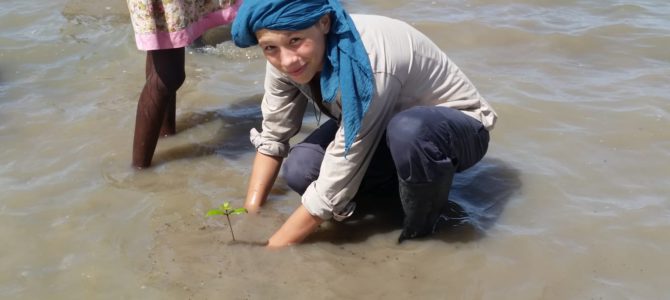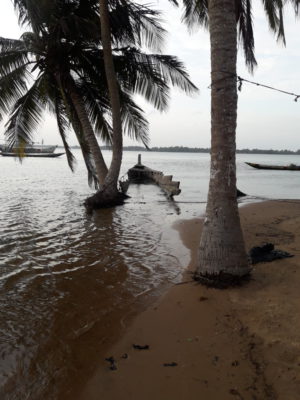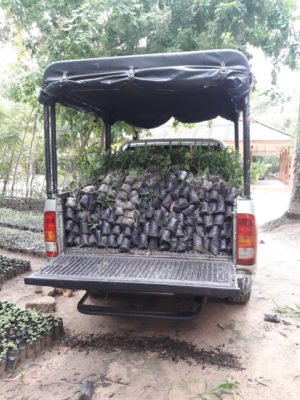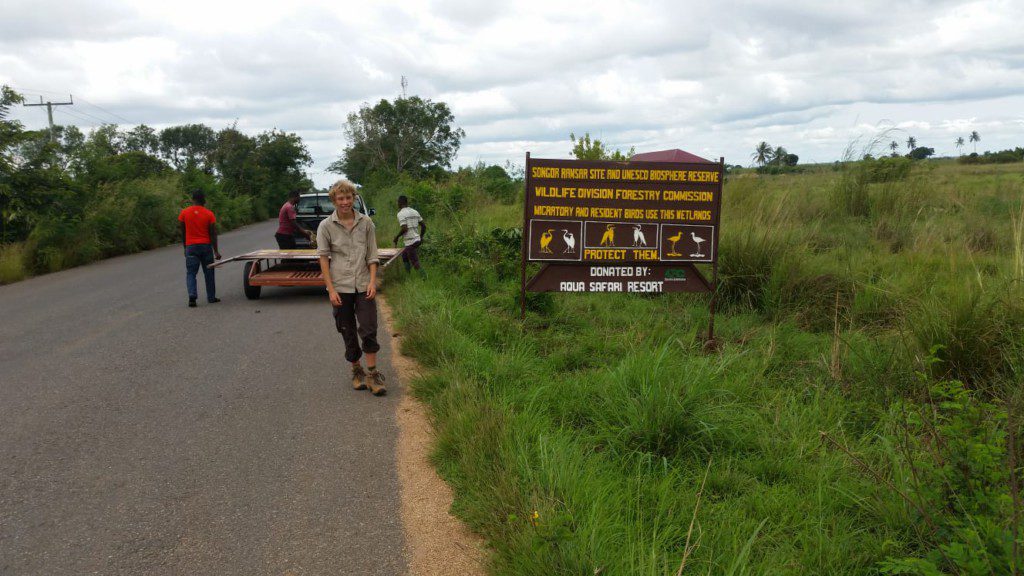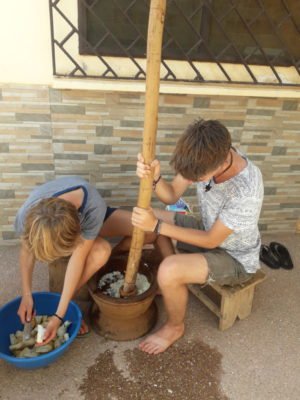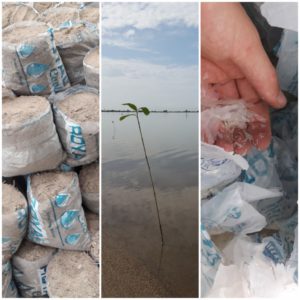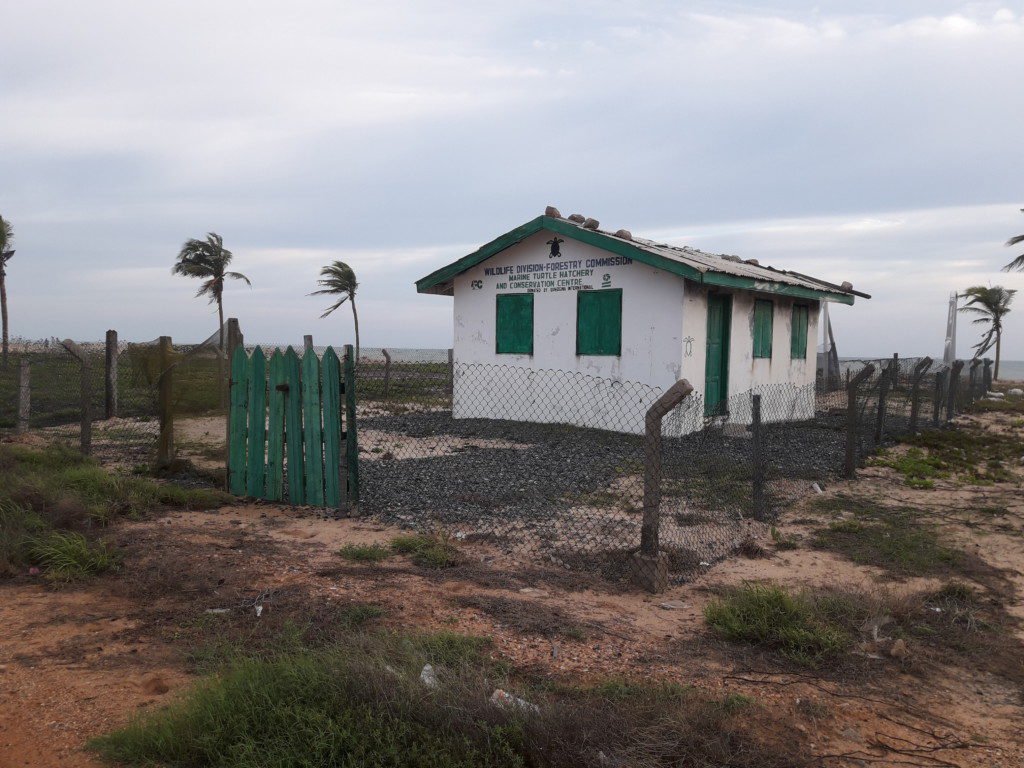Nach über einem Monat fühle ich mich bei meiner Arbeit im Songor Ramsar Site und UNESCO biosphere Reserve sehr wohl und habe mir überlegt, in meinem Freiwilligendienst auch mal über den Dienst an sich zu berichten.
Das Reservat besteht bereits seit 2011 und ist wegen der einzigartigen Kombination aus Brackwasserlagune und Flussdelta zum UNESCO Biosphärenreservat ernannt worden. Es gibt eine Mischung aus Süßwasser und Salzwasser Ökosystemen mit Inseln, Mangroven, Strand, Küsten Savanne und kleinen geschützten Waldgebieten.
http://gh.chm-cbd.net/biodiversity/faunal-diversity-ghana/-situ-conservation-2/ramsar-sites/sanghor-ramsar-site
Declaration Date: 2011
Location: Latitudes 06°00’ 25’’ N, 00°19’E and 05° 45’ 30 ’’ N, 00°41’ 40’’E
Surface Area: 51,113.3 ha
Core area(s): 1699.08 ha
Buffer zone(s): 7822.03
Transition area(s): 28075.041ha
Administrative authorities: WILDLIFE DIVISION
Die Nutzung natürlicher Ressourcen und der Umweltschutz, sollen von den lokalen Leitungen in den Kommunen weitestgehend selbst organisiert werden. Hierzu treffen sich die jeweiligen Vertreter mit der Wildlife Division und Forestry Commission, um gemeinsam Themen, wie Salzgewinnung, Mangrovenpflanzungen und Wassernutzung abzusprechen. Wichtig ist hier die Zusammenarbeit und gemeinsame Planung, da Probleme nicht vor den Distriktgrenzen halt machen. So wird beispielsweise Dienstag nicht gefischt und Donnerstag keine Landwirtschaft betreiben, sodass sich die Natur erholen kann.
Bei dem Office in Big Ada arbeiten die Wildlife Division und Forestry Commission zusammen und teilen sich das Gelände mit anderen Einrichtungen. Wenn wir morgens um acht mit den Rädern zur Arbeit fahren, drehen wir als erstes die obligatorische Begüßungsrunde auf dem Gelände, um allen einen guten Morgen zu wünschen. Auch in den Pausen trifft man sich oft zusammen im Schatten, quatscht und teilt das Mittagessen.
Über meine Tätigkeiten und die Herausforderungen im Biosphärenreservat habe ich letzte Woche für die Ghanaische UNESCO Nationalkommission einen Report geschrieben..
Report on the Voluntary service in Sogor Ramsar Site No.1
by Ronja Trübger (16/9/19-16/10/19)
Arrival and Orientation
I arrived in Accra on the 16th of September and stayed there for two nights with the other volunteers. During our stay we went to the National commission for the UNESCO in Ghana and learned much about the structure and responsibilities of a Biosphere Reserve. Furthermore, we were invited by the German embassy for lunch and we had a meeting with the ambassador in which we got much information about the Ghanaian and German relationship. On 18th of September the UNESCO send me to Ada Foah, where a house is provide for the UNESCO Volunteers. My neighbours are also my colleagues and work for the forestry commission and Wildlife division. During the first days they introduced me to the other staff members and helped me a lot with the orientation in Ada and surrounding.
Talks and activities at work
• Raising mangrove seedlings: We sliced water sachets and filled them with soil for planting seedlings inside (Acacia mangium). Moreover we took care of the one year old Mangroves by watering them, cleaning the area from litter and removing old leaves, sticks and weed.
• Turtle monitoring: I took part in the weekly beach patrol on a beach quad, in which we counted and documented the turtle tracks and death individuals of three different marine turtles (olive ridley sea turtle, leatherback sea turtle, pacific green sea turtle)
• River cleaning: Every Thursday the river bank next to the office is cleaned by the forestry commission together with a community downstream. All Trees and reeds at the riverside are cutted down, so that the river can flow faster into the Songor lagoon, which is too dry and salty because of the salt extraction.
• Restauration of signs: I helped to build up two new painted signs next to the main road, which inform passing cars about the UNESCO biosphere reserve and the Nature protected area.
• Meetings:
Election: I took part in a meeting about the future plans of the Biosphere Reserve and the election of a board which will represent all communities. Therefor the biosphere Reserve, the Foa (Food and Agriculture organization for United nations) and two members of each community in the districts west and east Ada met and discussed about issues and challenges of landscape use and Nature protection.
Radio: Together with the Biosphere Reserve, the local radio (Radio Ada) planed a radio show series about the particularities and challenges in each community. Therefore we went to the community in Totope next to the songor lagoon and interviewed the fishermen and woman in which way changes and problems (like overfishing, erosion, climate change, and environmental pollution) in the past and present impact their daily lives and what could be solutions or benefits in the future. Afterwards we analysed the meeting, created a first concept for the radio show and collected ideas for a general advertisement slogan about nature protection in the biosphere Reserve.
Private
After one month, previous challenges have become part of my everyday life now. I learned a lot about the habitats and traditions of the residents and our neighbour showed me how to prepare the local food. Furthermore I have Dangme lessons three times a week and try to interact in Dangme as much as possible. At the weekends I was discovered the area around the Volta delta and I travelled already to the Xavi Bird Sanctuary, to Kumasi and to the lake Bosomtwe Biosphere Reserve.
Challenges
During my first two weeks, our contact person Mr. Dickson was on a journey. In this time there were no staff meetings and Lukas and I didn’t get a general introduction in our working tasks. Our colleges showed us some workspaces, but there were a few intern communication problems. Because of this, we didn’t know exactly what we were expected to do.
But finally we are included in nearly every part of the work inside the Biosphere Reserve. Moreover, we talked to Mr. Dickson about his expectations and tasks in Future.
I also had a disagreement about the Mangrove planting, because the seedlings are planted together with a plastic sachet. I suppose planting the seedlings in a plastic bag may be easier for the communities and the Mangroves may have better growing conditions. I also know that there are many different environmental challenges, the biosphere reserve is dealing with and that plastic pollution is only one of many problems. But in my personal point of view it shouldn’t be an option for a Biosphere Reserve to insert plastic in the nature in any situation. We could not find a solution together but we will continue to discuss other possibilities of planting.
Nach einem Monat werden mir immer noch neue Zusammenhänge und Probleme klar, mit denen sich die Kommunen und die Mitarbeiter des Reservats auseinander setzen müssen. Besonders ein Treffen mit der Kommune in Totope an der Songor Lagune hat mich sehr beeindruckt.
Für eine Radiosendung haben wir mit „Radio Ada“ die Einwohner in Totope über die lokalen Probleme und Veränderungen der letzten Jahre interviewt.
Es ging um geringe Fangquoten auf Grund der Meeresverschmutzung und der großen Fischtrawler, die auch illegal immer näher an der Küste fischen und verletzte Schildkröten als Beifang einfach wieder über Bord werfen. Die Fischer sind gezwungen engmaschigere Netze zu verwenden und den damit verbundenen Rückgang der Artenvielfalt von Fischen und Vögeln zu fördern. Seit einiger Zeit fangen sie in der Lagune nur noch Qualle und Müll. Zudem ist die Lagune durch die Salzgewinnung und geringe Regenfälle zu salzig, um Mangroven anzupflanzen. Dadurch wird die Erosion der Küste verstärkt und die Existenz des Dorfes ist auf lange Sicht in Gefahr.
Und auch wenn es immer weniger Arbeit gibt haben alle in der Vorstellungsrunde gesagt: lch bin ein Fischer oder ich bin eine Fisch-Räucherin. Sie sind stolz auf diesen traditionellen Beruf und am Ende singen sie ein altes Dorflied über Freundschaft und Gemeinschaft. Männer, Frauen und Kinder, fast alle haben sich an dem Interview beteiligt und hatten viel zu erzählen. Sie möchten Veränderung und haben auch konkrete Vorstellungen. Es fehlt an Kontrollen und einem Notfalldienst wegen der illegalen Fischerei, sanitären Anlagen und Möglichkeiten einer Abfallentsorgung.
Manchmal kommt mir das ganze Reservat und das Zusammenleben von Mensch und Natur wie ein großes Ökosystem vor, in dem biotische und abiotische Faktoren verändert werden und eine Kettenreaktion an Folgen nach sich ziehen.
Und ich habe in meinem kleinen beschränkten Horizont gedacht, dass der Meeresmüll das größte Problem darstellt. Trotzdem halte ich das einpflanzen von Plastiktüten in die Lagune als ein Biosphärenreservat für indiskutabel, so klein der Prozentsatz am globalen Müll auch sein mag. Vielleicht lässt sich in Zukunft eine bessere Lösung finden.
Ps.:Am Freitag war ich zum 1. Mal mit auf einem Turtle Night Walk. In dem Ökotourismus-Angebot können Urlauber gemeinsam mit Mitarbeitern der Wildlife Division auf nächtliche Schildkrötensuche gehen. Leider haben wir keine gesehen. Dafür aber Schildkrötenspuren, die Nester und auch durch Hunde geplünderte Nester. Aber bis Februar hab ich ja auch noch ein bisschen Zeit. Die Spannung steigt …
